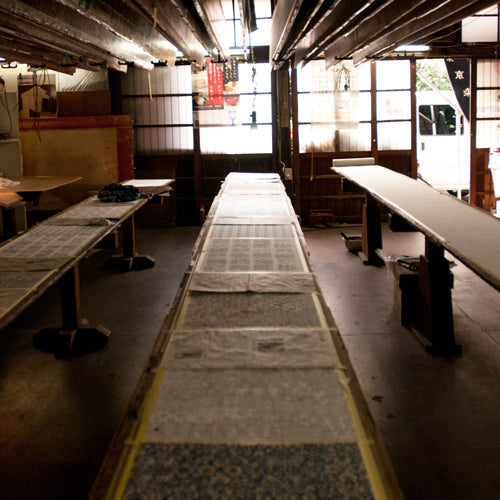Edo Komon and Patterns

What are the "large and small hail" patterns in Edo Komon?
Daisho-arare is a traditional Japanese pattern, a dotted design that represents graupel.
By scattering large and small dots irregularly, it skillfully expresses the movement and flurry of falling hail. It is a sophisticated design, yet has a simple beauty that has made it a favorite throughout the ages.
History of the Edo Period and the Samurai's Kamishimo

During the Edo period, the hail pattern was used as a formal design by samurai.
- The Asano family of the Geishu Domain (Hiroshima Domain) adopted the "arare" pattern for their kamishimo (traditional Japanese kimono).
- The Shimazu clan of the Satsuma domain used the "large and small hail" pattern as their designated pattern.
The large and small arare pattern is a design of large and small dots, which is visually rich and highly valued as an expression of the dignity of the samurai. In particular, the Shimazu clan used large and small arare as a formal pattern on their samurai costumes.
The characteristics of large and small hail and the appeal of its design
- Rhythm of small and large
- Varying the size of the dots gives the design a rhythmic impression rather than a monotonous look.
- The simple yet dynamic design exudes refined beauty.
-

- A pattern that combines formality and dignity
- It has a formal and dignified design, as it was used on samurai's hakama.
- However, the dotted pattern also has a softness to it, giving it a chic and sophisticated impression.
- A design still popular today
- It is used as a traditional Japanese pattern on kimonos and obi.
-
It is also used in the design of Japanese accessories (wallets, furoshiki, tenugui, bags, etc.).

- In interior design, it is also used in wallpaper, fabrics and ceramic decoration.
★ Large and small hail are a formal pattern that is deeply connected to the samurai culture of the Edo period, but they are also attractive for their simple and sophisticated design. While inheriting tradition, they are still used in various ways in modern times and are popular as designs that represent the Japanese aesthetic sense.

